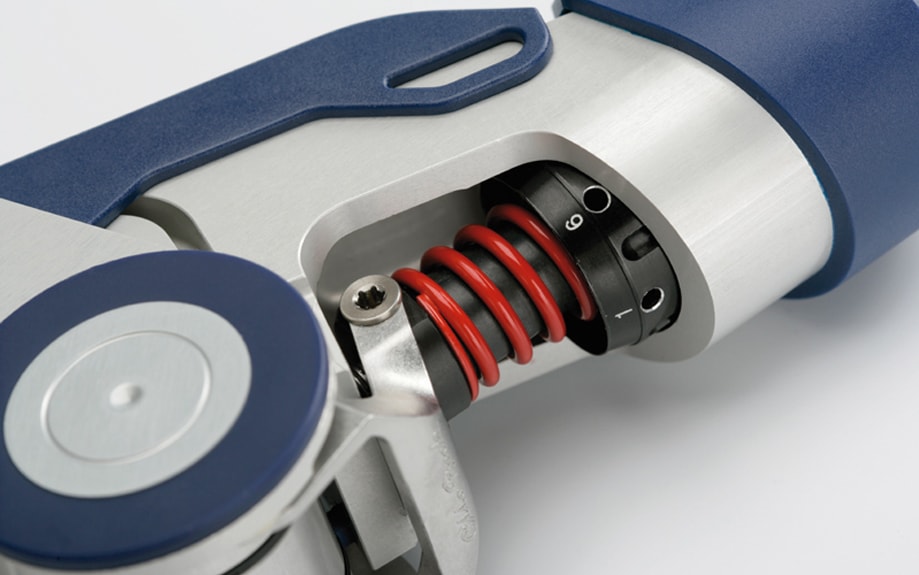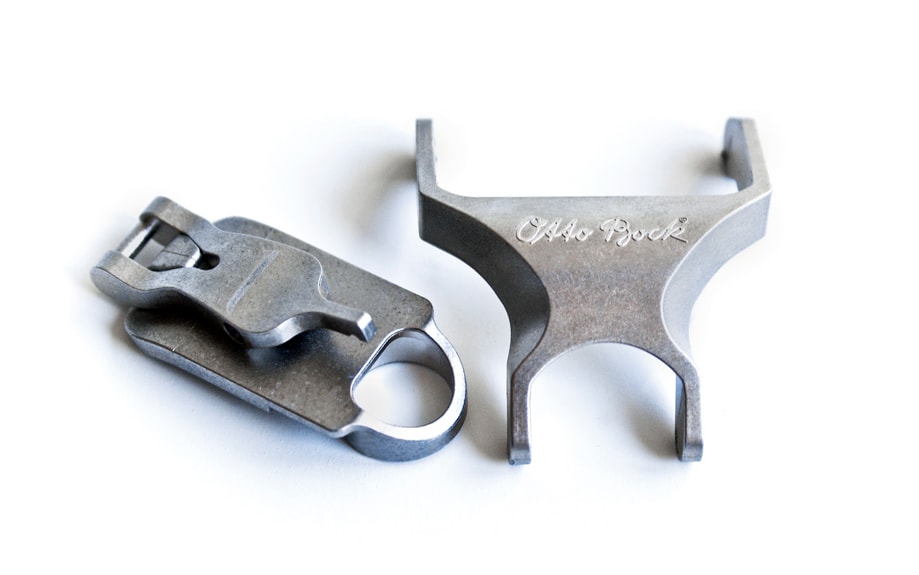MIM medical applications today have an extremely wide variety of shapes and sizes. Often these components require highly complex geometries and high-performance materials that deliver corrosion resistance and strength.
Otto Bock uses Metal Injection Moulding for three different components in the prosthetic knee 3R93 that not only enhance the product performance but also the manufacturing costs. We manufacture a blocking plate, blocking hook and a twin connecting plate.
Demands on the three components are very high. All components must guarantee a completely safe operation because patient safety is the priority. In addition to excellent corrosion resistance and high mechanical strength, an attractive surface appearance of both visible and invisible parts is expected.

Stretching unit with twin connecting plate
The Challenge
Even though the MIM process is well established in the medical sector, the level of knowledge about the technology amongst design engineers and end-users is still very low. In this context the importance of sales and marketing expertise should not be underestimated. Educational work is therefore more important than ever. At GKN Sinter Metals we are aware of this challenge. We closely monitor our existing customer base with the aim of finding potential synergies.
In the past, alternative production methods such as milling and investment casting were predominant at Otto Bock Health Care. Otto Bock's development engineers are now applying MIM and see many potential applications within their wide range of products.
“You need to start thinking differently when you apply a shaping process like the injection moulding of metal parts rather than a machining process. The design of freely formed surfaces must be intensified.”
-Steffen Sawatzki, Head of the Prosthetic Knees and Hip Joints Division at Otto Bock
The Function
The blocking plate and blocking hook are assembled together in the knee joint as a unit. They are used to prevent accidental variable knee flexion when necessary as a protection of the knee joint. In this case the blocking hook, which is rotatable, snaps in on the blocking plate in the extended position and blocks the flexion of the prosthesis. When the blocking hook is lifted in the extended position, the flexion of the knee prosthesis is activated and the patient can sit down, for example.
The twin connecting plate has two functions. First it serves as a protection against accidental reaching into the joint, and on the other hand, it is required for the power transfer and connection of the prosthetic knee stretching device when the knee is bent or stretched.

GKN Sinter Metals MIM parts for Otto Bocks prosthetic knee joint
Why MIM?
“With the MIM process our designers have more creative freedom, thus entirely new avenues for part design open up the possibility for product innovation. At the same time, compact and sophisticated metal part design has also clear advantages in terms of production costs. Another strong argument for us was the possibility of reducing secondary operations, which in turn also saved time and cost. And beyond that MIM materials simply offer a more homogeneous material structure which dramatically improves the technical characteristics.”
-Steffen Sawatzki, Head of the Prosthetic Knees and Hip Joints Division at Otto Bock